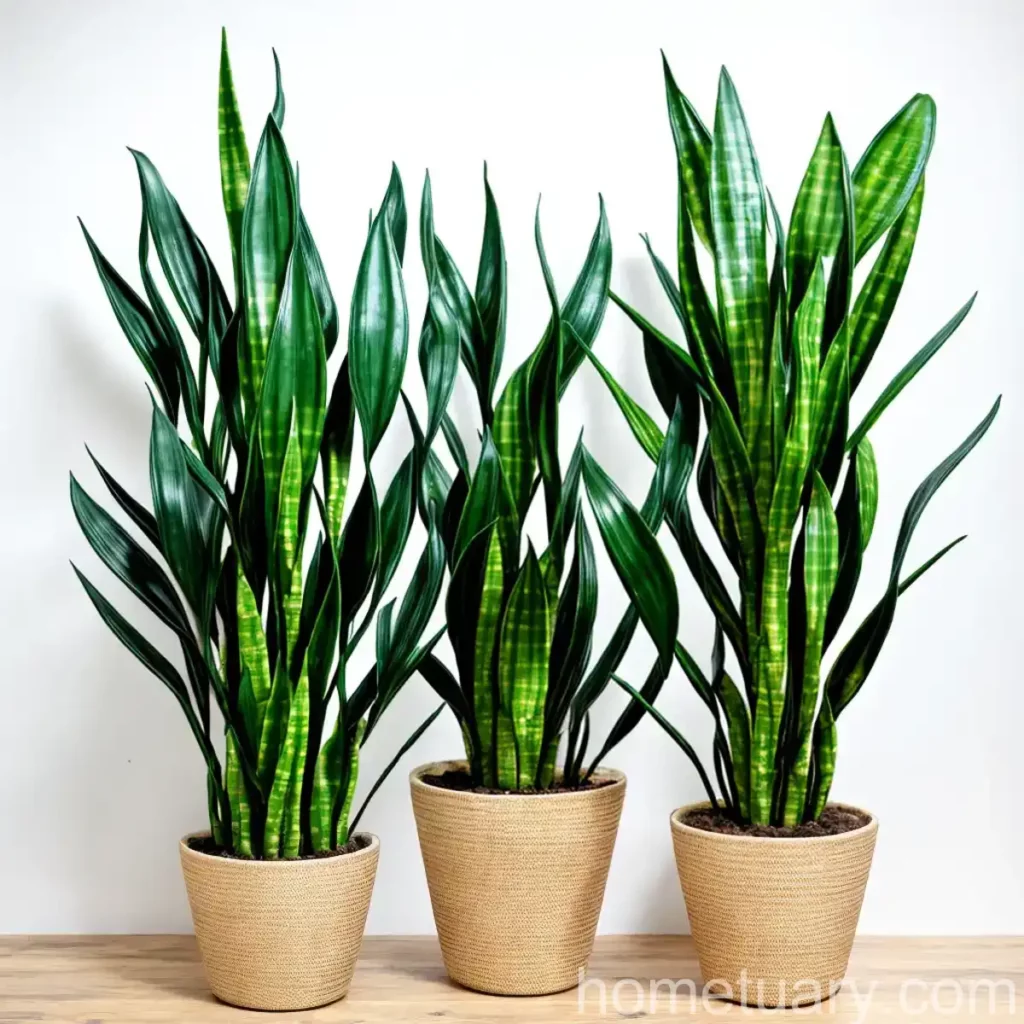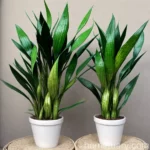Snake Plant (Sansevieria patens): A Comprehensive Guide
Sansevieria patens, commonly known as the snake plant, is a popular ornamental houseplant that has gained widespread popularity due to its unique appearance and ease of care. In this comprehensive guide, we will explore the various aspects of snake plant care, including its cultural significance, uses, water and sunlight requirements, soil and fertilizer needs, as well as propagation and maintenance techniques.
What is the Snake Plant (Sansevieria patens)?
The snake plant, scientifically known as Sansevieria patens, is a species of flowering plant in the family Asparagaceae. It is native to West Africa and is characterized by its stiff, upright leaves that are typically banded with shades of green and gray. The plant derives its common name “snake plant” from the resemblance of its leaves to the skin of a snake.
Key Takeaways – Snake Plant (Sansevieria patens)
Before delving into the specifics of snake plant care, let’s highlight the key takeaways regarding this fascinating plant:
- Snake plant benefits extend to its air-purifying properties, making it a valuable addition to indoor spaces.
- Sansevieria patens care is relatively low-maintenance, making it an ideal choice for both novice and experienced plant enthusiasts.
- There are several snake plant varieties, each exhibiting unique leaf patterns and colorations, allowing for diverse decorative options.
- Propagating snake plants through leaf cuttings is a popular and straightforward method of expanding your plant collection.
- Snake plants thrive in well-draining potting mix and require infrequent watering to prevent root rot.
- Adequate sunlight and minimal fertilizer needs contribute to the plant’s resilience and adaptability to various indoor conditions.
- Regular pruning helps maintain the plant’s aesthetic appeal and prevents overgrowth.
- Snake plants are pet-friendly and can be used to create visually appealing, low-maintenance decor in home and office environments.
Now, let’s delve into the specific aspects of snake plant care and maintenance.
Culture
The snake plant holds cultural significance across various traditions and societies. It is often associated with traits such as resilience, longevity, and good fortune, making it a popular choice for gifts and decorative purposes. In Feng Shui, the plant is believed to bring positive energy and prosperity to the spaces it inhabits.
Uses
The snake plant serves multiple purposes, making it a versatile addition to both indoor and outdoor landscapes. Some common uses of the snake plant include:
- Air purification: Snake plants are known for their ability to remove toxins such as formaldehyde, xylene, toluene, and nitrogen oxides from the air, making them beneficial for enhancing indoor air quality.
- Decorative purposes: Its striking appearance and low-maintenance requirements make the snake plant a popular choice for interior decor in homes, offices, and public spaces.
- Feng Shui: The plant is believed to bring good luck, positive energy, and prosperity when placed in specific areas of a living or working space according to Feng Shui principles.
Water
One of the most critical aspects of snake plant care is managing its water requirements. Overwatering can lead to root rot, while underwatering can cause the plant to wilt and become stressed. Finding the right balance is crucial for maintaining the health of the plant.
Snake plants have adapted to survive in arid climates, storing water in their leaves and requiring minimal watering. The general rule of thumb is to allow the soil to dry out completely between waterings. This typically translates to watering the plant every 2-6 weeks, depending on environmental conditions such as humidity, temperature, and the type of potting mix used.
Sunlight
Snake plants are known for their adaptability to various light conditions, making them suitable for both indoor and outdoor environments. While they can tolerate low light, they thrive in indirect to bright, indirect light. Placing the plant near a window that receives filtered sunlight for several hours a day is ideal for promoting healthy growth and leaf variegation.
Fertilizer
One of the benefits of snake plants is their minimal fertilizer requirements. These hardy plants can thrive without regular fertilization, making them an excellent choice for low-maintenance indoor greenery. A balanced liquid fertilizer diluted to half strength can be applied during the growing season, typically from spring to early fall, to provide a gentle boost to the plant’s nutrient intake.
Soil
The snake plant thrives in well-draining potting mix to prevent waterlogging and root rot. A cactus or succulent mix, which provides excellent drainage, is ideal for snake plants. Alternatively, a regular potting mix amended with sand, perlite, or pumice to increase aeration and drainage can also be suitable for this plant.
Pruning
Pruning is an essential aspect of snake plant maintenance, especially for controlling its size and maintaining its aesthetic appeal. Over time, older leaves may become discolored or excessively long, and removing them can promote new growth and rejuvenate the plant’s appearance. Additionally, pruning can help prevent the plant from becoming too top-heavy and tipping over in its container.
Propagation
Propagating snake plants is a popular practice among plant enthusiasts, allowing them to expand their plant collection and share the joy of growing these resilient plants with others. Leaf cuttings and division are the two primary methods of propagating snake plants.
Leaf Cuttings
To propagate snake plants from leaf cuttings, select a healthy leaf and cut it into several sections, ensuring that each section has a portion of the leaf and a node. The cuttings can then be placed in a well-draining potting mix, where they will develop roots and eventually grow into new plants.
Division
Dividing mature snake plants involves separating the plant into smaller sections, each with its roots and foliage. This method is particularly suitable for large, established plants that have produced offsets or multiple growth points. Divided sections can be potted in individual containers and cared for as independent plants.
Container
Choosing the right container for your snake plant is essential for its growth and overall well-being. Consider the following factors when selecting a container for your snake plant:
- Size: Choose a container that allows the plant’s roots to have sufficient space to grow without being excessively compacted. This can help prevent root-bound conditions and promote healthy growth.
- Drainage: Opt for a container with drainage holes to ensure proper water drainage and prevent waterlogging, which can lead to root rot.
- Material: Containers made of materials such as terracotta, ceramic, or plastic are commonly used for snake plants. Each material has its advantages in terms of water retention and breathability.
Popularity
The snake plant’s popularity has soared in recent years, garnering attention for its decorative appeal, air-purifying properties, and ease of care. This increased demand has led to the introduction of various snake plant varieties with unique leaf patterns, colors, and sizes, catering to a diverse range of preferences among plant enthusiasts.
Common Diseases
While snake plants are generally resilient and low-maintenance, they can be susceptible to a few common diseases and issues that can affect their health and vitality. It is essential to be aware of these potential problems and take proactive measures to prevent and address them effectively.
Disease Diagnosis
Diagnosing and addressing diseases affecting the snake plant requires a keen eye for symptoms and prompt intervention to prevent the spread of the issue.
Common Pests
Pests such as mealybugs, spider mites, and scale insects are among the common pests that can affect snake plants. Regular inspection of the plant’s foliage and soil can help detect pest infestations early, allowing for targeted treatments such as insecticidal soaps or horticultural oils to address the issue promptly.
Botanist’s Tips
To ensure the health and vitality of your snake plant, consider the following tips from botanists and experienced plant caregivers:
- Monitor watering: Pay close attention to the plant’s water requirements, allowing the soil to dry out between waterings to prevent waterlogged conditions.
- Provide adequate light: Position the snake plant in a location that receives indirect to bright, indirect light to promote healthy growth and vibrant leaf coloration.
- Use well-draining soil: Choose a potting mix that provides excellent drainage to prevent waterlogging and root rot.
- Avoid overfertilizing: Refrain from excessive fertilization, as snake plants have minimal nutrient requirements and can be sensitive to high concentrations of fertilizer.
Fun Facts
- The snake plant is one of the top air-purifying plants, with the ability to remove toxins such as formaldehyde and benzene from the air, contributing to improved indoor air quality.
- It is known for its oxygen-producing properties, releasing oxygen even at night, which can enhance the air quality in bedrooms and living spaces.
- The plant is considered pet-friendly and safe for homes with cats and dogs, making it an excellent choice for pet owners seeking non-toxic indoor plants.
Links to External Resources
For further information on snake plant care, propagation, and maintenance, explore the following external resources:
- Snake Plant Care: Growing The “Mother-In-Law’s Tongue” – The Spruce
- Sansevieria patens: African Spear Plant Care Guide – Plantophiles
- Snake Plant: The Complete Care Guide – Bloomscape
In conclusion, the snake plant, or Sansevieria patens, is a remarkable addition to any indoor or outdoor setting, offering a blend of aesthetic appeal, air-purifying properties, and low-maintenance care requirements. By understanding and implementing the recommended practices for watering, sunlight exposure, soil quality, and propagation, plant enthusiasts can enjoy the many benefits of cultivating and caring for this resilient and visually captivating species. Whether it’s for its decorative charm, air-purifying abilities, or cultural significance, the snake plant continues to captivate plant lovers and contribute to the overall well-being of indoor environments.















